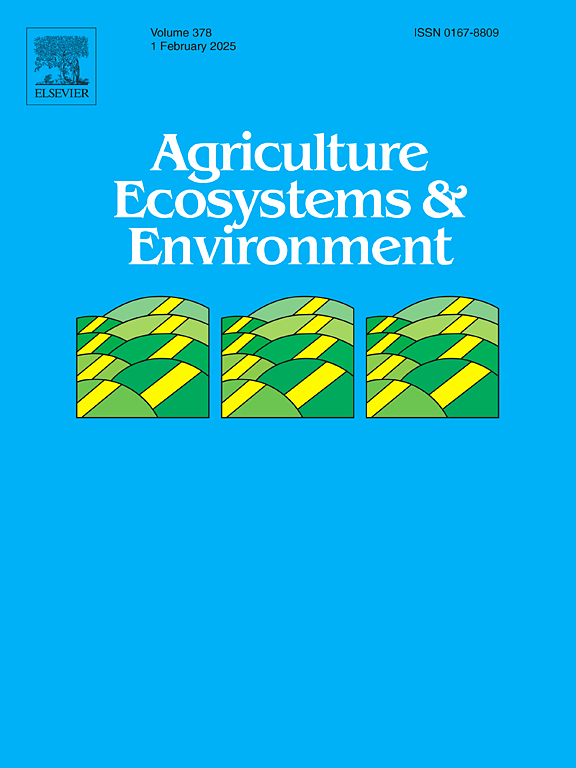Stable water isotopes reveal modification of cereal water uptake strategies in agricultural co-cropping systems
IF 6
1区 农林科学
Q1 AGRICULTURE, MULTIDISCIPLINARY
引用次数: 0
Abstract
Agricultural co-cropping is being evaluated in temperate environments as a potential nature-based solution to the changing climate. However, the understanding of underlying physiological processes in co-cropping and its potential to provide climate resilience in temperate agroecosystems remains limited. This study investigated water sources for plants in five distinct cereal-legume co-cropping systems and four of their corresponding cereal monocultures at four main growth stages, under contrasting temperate hydro-climatological conditions in Scotland. Stable water isotope compositions (δ2H and δ18O) for soil water and xylem water were established. Based on the isotope compositions, a Bayesian multi-source mixing model was used to explore proportional soil water uptake patterns for cereal crop plants. Cereals grown in monocultures in this environment took more than 60 % of their water from the upper topsoil (soil depth <5 cm) during the main growth stages, under both wet and dry conditions. However, cereals cultivated as co-crops with legumes modified their water uptake strategy through increased water acquisition from the lower topsoil (5 – 30 cm) compared to monocultures, independent of environmental conditions. These novel findings suggest that co-cropping systems could potentially provide climate resilience for temperate agricultural systems. The findings provide an evidence-base for sustainable water planning, drought preparation and environmental intervention policies.
求助全文
约1分钟内获得全文
求助全文
来源期刊

Agriculture, Ecosystems & Environment
环境科学-环境科学
CiteScore
11.70
自引率
9.10%
发文量
392
审稿时长
26 days
期刊介绍:
Agriculture, Ecosystems and Environment publishes scientific articles dealing with the interface between agroecosystems and the natural environment, specifically how agriculture influences the environment and how changes in that environment impact agroecosystems. Preference is given to papers from experimental and observational research at the field, system or landscape level, from studies that enhance our understanding of processes using data-based biophysical modelling, and papers that bridge scientific disciplines and integrate knowledge. All papers should be placed in an international or wide comparative context.
 求助内容:
求助内容: 应助结果提醒方式:
应助结果提醒方式:


